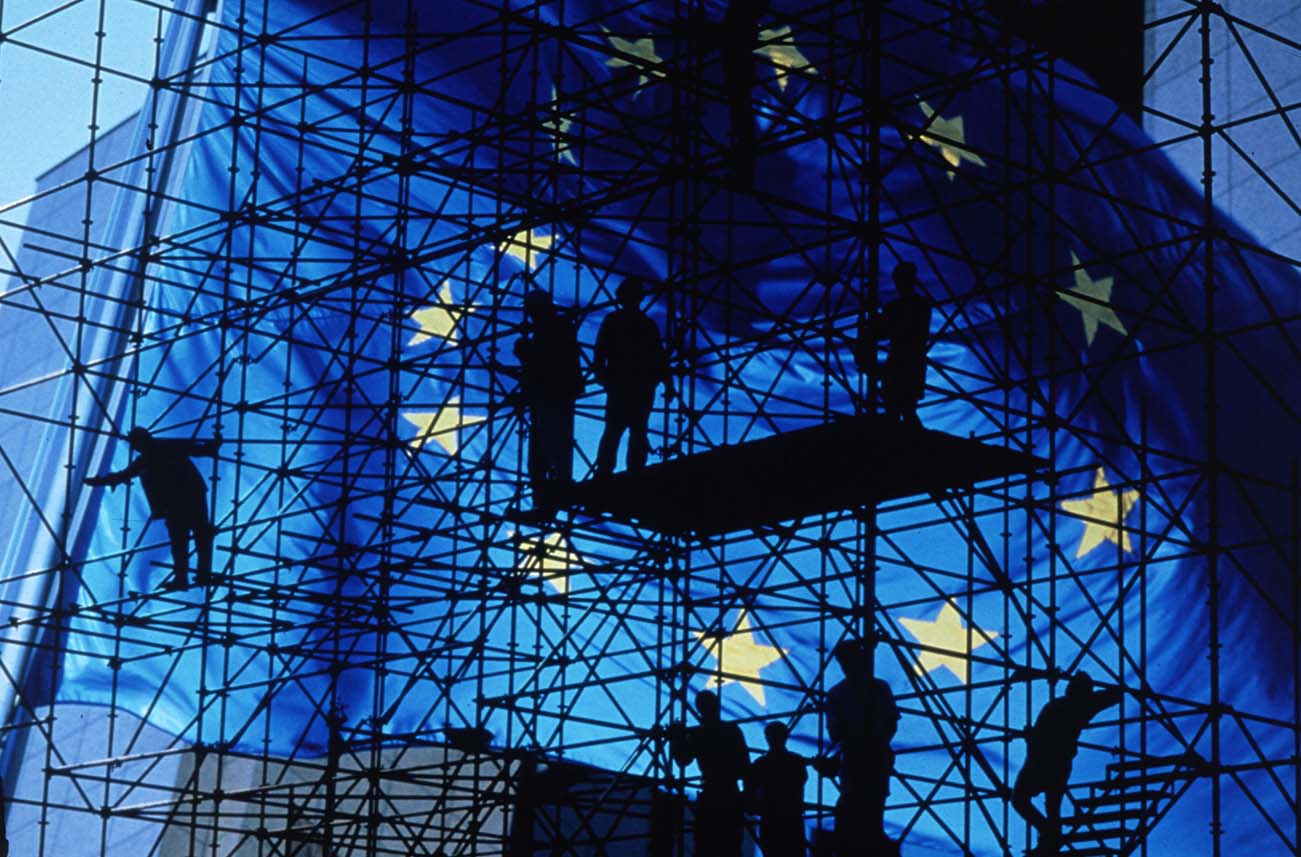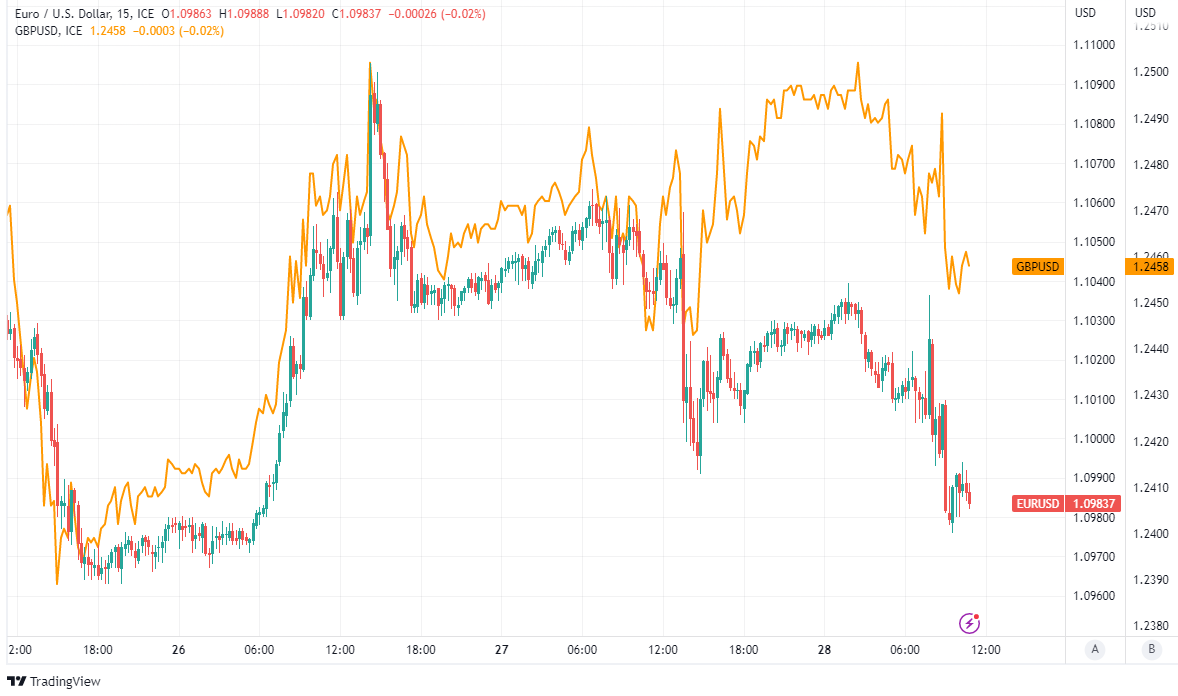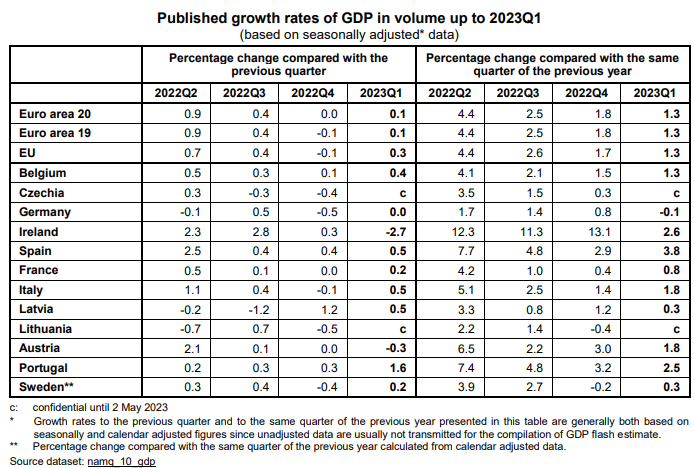Underwhelming Data Stifles Euro as U.S. Inflation Eyed
"Most of the recent support factors for growth are set to fade or have already faded" - BofA Global Research.

Image © European Commission Audiovisual Services
The Euro to Dollar exchange rate was hobbled below 1.10 in early trade after Euro Area growth figures underwhelmed economist expectations just hours out from the release of the latest U.S. inflation figures, which could be key to whether or not the Federal Reserve (Fed) raises its interest rate next week.
Europe's single currency gave ground to the Dollar and many other counterparts with clear underperformance against Asian currencies and a more mixed picture in relation to continental peers after Eurostat said the local economy grew by a mere 0.1% in the opening quarter of the year.
Economists had been looking, on average, to hear of a 0.2% expansion following the 0.1% increase seen late last year but on the day both numbers surprised on the downside with the final quarter's estimate of 0.1% being revised lower to 0%.
"Growth across the eurozone ranged from -2.7% QoQ in Ireland to +1.6% QoQ in Portugal," says Carsten Brzeski, global head of macro at ING.
 Above: Euro to Dollar rate shown at 15-minute intervals and alongside GBP/USD.
Above: Euro to Dollar rate shown at 15-minute intervals and alongside GBP/USD.
"The eurozone economy has now been able to avoid what a few months ago was probably the best predicted recession ever. The warmer winter weather, lower wholesale energy prices, the reopening of China and fiscal stimulus are the key drivers behind this better-than-expected performance," he adds.
Growth in the broader European Union was slightly higher at 0.3% for the quarter, though on a seasonally adjusted and annualised basis the Euro Area outperformed the broader European Union with a 1.8% increase in GDP Vs a 1.7% expansion in the overall EU.
The bloc has so far escaped what was expected, at times in the last year, to be a crunching recession resulting from a confluence of the pandemic after-effects, highly significant increases in energy prices connected with the war in Ukraine and rising European Central Bank (ECB) interest rates.
"The typical transmission lag of monetary policy suggests that the full growth impact from the aggressive central bank tightening campaign is set to materialize by Q4," says Sebastian Raedler, a strategist at BofA Global Research.
Source: Eurostat.
"Most of the recent support factors for growth are set to fade or have already faded (including company order backlogs and consumers excess savings). Projections from the Bureau of Economic Analysis also suggest that US fiscal spending will not make a meaningful contribution to growth this year," he adds.
Many economists do agree, however, that the outlook for all economies is still highly uncertain while the Euro itself has most recently been burdened by headwinds resulting from the slowing U.S. economy revealed in Thursday's release of first-quarter GDP data on the other side of the Atlantic.
U.S. GDP growth slowed from an annualised 2.6% to 1.1% last quarter, leaving it growing slightly faster than the Euro Area, having been propped up by rising consumer spending but also held back by changes in inventories of goods and declines in other kinds of investment.
The Euro to Dollar rate, however, is likely to be sensitive on Friday to whether or not the Federal Reserve's targeted measure of U.S. inflation falls further toward its target for the March month during North American trade, though economists see the monthly measure remaining unchanged at 0.3%.
